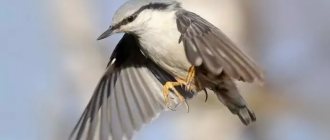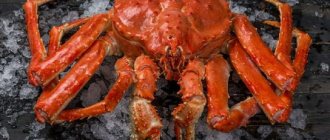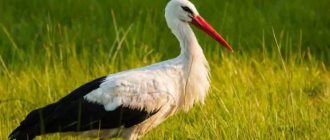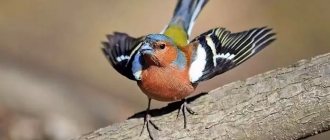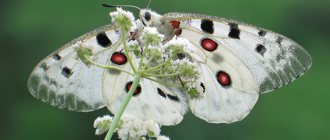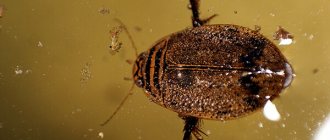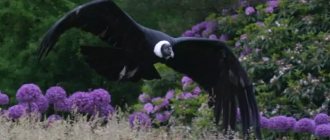The vast forests of Russia are home to many different species of animals. Among them there are also very unusual ones, such as flying squirrels.
Flying squirrels, as they are also called, got their nickname because they can deftly hover between trees, covering considerable distances. This is possible due to the fact that the animals have rather large membranes that connect their front and hind legs. A description of the flying squirrel will be presented below.
general characteristics
Flying squirrels look a little like ordinary squirrels. The average body size is from 15 to 20 cm, the length of the tail is almost equal to the body length from 10 to 20 cm. Among flying squirrels there are miniature species, the size of which, taking into account the tail, does not exceed 20 cm. But there are also quite large individuals from 40 to 60 cm and weighing about 1-1.5 kg.
In the wild, the average life expectancy is about 5 years. In captivity, some representatives of the species can live from 10 to 15 years.
General appearance characteristics:
- The body is compact and small in size.
- A fold of skin (web) from the forelimbs (from the wrist) to the base of the tail. In the common flying squirrel, the membrane starts from the forelimbs and ends not at the tail, as in other species, but at the hind limbs (to the foot).
- The tail is equal to the length of the body and is covered with thick fur. In most species, the fur is divided by a longitudinal parting. In a sitting position, the squirrel throws its tail over its back.
- The head is round, blunt-nosed. Some species have an elongated muzzle.
- Ears, rounded without tufts. Widely spaced, usually darker than the base color.
- All representatives of the genus have bulging, round eyes. This is due to the fact that flying squirrels lead a predominantly crepuscular and nocturnal lifestyle.
- The forelimbs are much shorter than the hind limbs.
- Each paw has 5 toes with tenacious claws. The exception is the rock squirrel, which has blunt claws.
- 2–4 pairs of nipples for feeding offspring.
Squirrels have thick, silky fur with a soft and dense undercoat. The color, depending on the species, can be gray, brown or brown. The lower part of the body is usually a lighter shade or white. There is also at least one tricolor species. There is a black rim around the eyes. Some species have a dark mask and a stripe on the back.
Flying squirrels molt seasonally, twice a year. The winter coat is much denser and thicker than the summer coat. Under the layer of fur, a dense undercoat grows, which protects the flying squirrels during cold weather.
The structure of the membrane
The leather fold is designed for planning and increasing the distance of the jump. When opened, it replaces a parachute or glider for squirrels. In a calm state, the membrane folds along the body. When jumping, the membrane stretches and helps the animal maneuver and glide above the ground.
The skin fold, like the entire body of the animal, is covered with hair, which does not differ from the main color. Sometimes there is a black or darker edging along the edge of the membrane.
At the anterior edge, the membrane is supported by a movable crescent-shaped bone that extends from the wrist; the length of the bone is equal to the length of the forearm.
Elena
Ask a Question
Question to the expert
Can flying squirrels fly using membranes?
No, since the membrane is only for gliding. There are no bones or muscles in the skin fold to carry out flapping and other actions associated with real flight.
How many years do they live
Captive flying squirrels have an average lifespan of 12-15 years. Animals living in the wild almost never live to this age. This is due to a large number of natural enemies. Very often, squirrels become victims of raccoons, martens, lynxes, coyotes and other predators. Tree snakes also hunt rodents. A squirrel hovering between trees is easy prey for birds of prey: owls, eagle owls, and falcons. Animals living near human settlements often suffer from attacks by cats. The average life cycle of flying squirrels in nature does not exceed 5-6 years.
What do flying squirrels eat?
The main diet of flying squirrels consists of plant foods. But some species are not averse to eating insects, larvae and other protein foods. There is evidence that some members of the genus happily eat bird eggs and chicks.
Diet:
- Buds of deciduous trees and shrubs.
- Young shoots, leaves, bark of trees such as birch, alder, linden, aspen and willow.
- Berries, mushrooms, nuts, seeds.
- Alder and birch catkins.
- Meadow grasses, flowers.
The diet may vary depending on habitat and species.
Flying squirrels do not hibernate, but wait out the cold in a hollow (nest) with supplies. During the cold season, the activity of animals decreases and squirrels rarely leave the confines of their cozy house.
Most species living in northern regions and cold climate zones make provisions for the winter. The reserves mainly consist of plant foods. This includes birch and alder catkins, cones with seeds, nuts and other products with a long shelf life.
When keeping flying squirrels at home, it is necessary to provide them with a complete diet, which will include all the items from the list. Unlike most domesticated rodents, flying squirrels cannot fully grow and develop on store-bought mixtures.
Kinds
Siberian squirrel - flying
squirrel Flying squirrels living in Europe are represented by the Siberian flying squirrel species. This small animal also inhabits some areas of Asia and India.
Flying squirrels of North America are slightly smaller in size than their European relatives and unite two families - northern and southern flying squirrels.
- Rodents
- 35 facts about foxes
- Animals of Brazil
- Tarantula spider
- 34 facts about lions
- Lynx
African flying squirrels differ greatly in appearance. Their skin membrane is attached to the elbow joint, not the wrist. They are also called scale-tailed squirrels.
Another group of animals that can fly are flying possums. These are marsupials that can be found in Australia and New Guinea. They are very reminiscent of flying squirrels in the structure of their leathery membrane and long fluffy tail. There are 3 known groups of flying possums.
- The first consists of the smallest representatives, whose weight barely reaches 130 g. For their passion for sweets, the animals are called sugar possums or honey possums. The animals are gray in color and have white bibs on their backs. In New Guinea, eyewitnesses have repeatedly noticed how these babies deftly grab moths in flight.
- Representatives of the second group are called feather-tailed gliders. Their characteristic feature is a tail, similar to a bird's feather. These mouse-sized animals can be found in both Australia and New Guinea. They feed mainly on insects and flower nectar.
- The third group consists of only one species - the large flying possum. The maximum weight of a male can reach 1.5 kg. These flying animals are close relatives of the koala and inhabit the eastern regions of Australia. The diet of the large flying possum is mainly plant food (leaves and buds of eucalyptus trees).
Lifestyle and character traits
We can say that flying squirrels are active all year round; they do not truly hibernate. During cold weather, flying squirrels fall asleep and wake up briefly, alternating periods of sleep with wakefulness. The animals eat little and practically never leave their nests. But with the arrival of the first warmth, the squirrels completely restore activity.
Lifestyle of flying squirrels
Like common squirrels, flying squirrels spend most of their time in trees and rarely descend to the ground. They lead a predominantly crepuscular and nocturnal lifestyle. Although there are exceptions, when females and young squirrels appear in the daytime.
Squirrels devote the entire evening and night to searching for food and arranging a nest. Flying squirrels eat part of the food, and store the other part in the nest for the winter.
Squirrels build nests at a height of 5 to 15 meters in old hollows and other suitable voids in trees. Some flying squirrels occupy bird nests or birdhouses. Rock squirrels sometimes settle in dry crevices and other people's burrows at a height of 3 to 6 m.
Flying squirrels are not afraid of people and often settle near housing, in parks and squares. And also near barns and granaries, where there is an endless source of food.
Flying squirrels build round nests from straw, blades of grass, soft bark, moss, lichens and bird feathers. During molting, animals insulate their nests with fallen fur.
In search of food, flying squirrels jump from tree to tree. In one jump, squirrels can cover a distance of 50 to 90 meters thanks to the skin fold between the front and hind limbs.
Recommended by topic
Fox Panda Lynx
The animals regulate their “flight” with the help of their tail and the opening of the membrane. During the jump, the fold expands and ensures hovering above the ground. When flying from tree to tree, squirrels spread their front legs to the sides and press their hind legs to their tail, thereby forming a triangle.
The squirrels land on the trunk tangentially, after which they grab the bark with their claws and quickly move to the other side of the tree. This is a kind of protective instinct that protects the squirrel from attacks by birds of prey. If you watch squirrels, it becomes clear that they never sit in one place for a minute and constantly move up, down and around the trunk.
It is quite difficult to see a squirrel in the branches. Due to their color and small size, they are perfectly camouflaged. When they see a person or other danger, flying squirrels hide behind the trunk and become invisible. The exception is when flying from tree to tree. In this case, the squirrel is visible to the naked eye.
For obvious reasons, squirrels practically do not leave traces on the ground. But if you look closely, you can see piles of droppings near the permanent routes. The excrement somewhat resembles ant eggs.
Question to the expert
What sounds do flying squirrels make?
Flying squirrels have a fairly diverse sound range. At times of emotional stress or danger, they make chirping and clicking sounds. The more excited the squirrel is, the louder and sharper the sound will be. In a calm state, they practically do not talk or do it so quietly that a person cannot catch the sounds. If you can hear a calm muttering, it resembles cooing or quiet clicks. Typically, females communicate with their offspring in this way.
Character and habits
Flying squirrels are social animals and often house several individuals in one nest. Often such families consist of 2-3 females, one adult male and several cubs that chose to stay with their parents. Adult males rarely coexist in the same nest, but exist freely in the same feeding territory. Females can show aggression towards strangers while bearing and raising offspring.
Flying squirrels are non-aggressive and not shy. They often settle near human habitation, but unlike ordinary squirrels they try not to be seen. Squirrels do not quarrel with other representatives of the animal world, but prefer to hide or run away.
Area
The flying squirrel has a wide range of habitats in the northern Palearctic region, extending from Finland, Estonia and Latvia in the east and through Russia, Mongolia, Northwestern China to the Pacific coast, including the Korean Peninsula and northeastern China. Flying squirrels are also found on the Pacific islands of Sakhalin (Russia) and Hokkaido (Japan). They live at altitudes ranging from sea level to treetops, and in China they can be found at altitudes of up to 2,500 meters above sea level. In Mongolia, the flying squirrel prefers wooded and mountainous areas.
Reproduction and raising of offspring
The study of periods of reproduction and raising offspring is still ongoing, since flying squirrels are very secretive and have many white spots in their behavior. This is facilitated by the nocturnal lifestyle and remote habitats of animals. Therefore, little accurate data is known about some species, while there is practically no data about others.
Mating season
It is known that in most species the mating season begins with the arrival of warm weather and repeats after about 1.5 months. The female, in the presence of warmth and a good food supply, can bear offspring twice a year. For example, in southern Finland the first season begins in March, and the second begins at the end of April. In the northern regions, the first period begins at the end of March, and the second begins in May.
Duration of pregnancy and childbirth
Pregnancy on average can last from 4 to 6 weeks depending on the species. The number of cubs is from 1 to 2. In some species, the birth of 4 cubs in a litter is possible. Babies weigh from 2 to 6 g.
After birth, sugar gliders move into their mother's pouch and are the first to emerge fully grown and with their eyes open.
Recommended by topic
Jay Frogs Boar
Baby squirrels are born blind and naked. After a few days, fluff appears on their body, and after 12–15 days their eyes open. Squirrels are mammals and feed babies milk for up to 2-2.5 months.
The first brood appears at the end of April, beginning of May, the second in June or July. Sometimes females skip the second period or it shifts to the end of summer. Then the babies appear at the end of August or September.
In captivity, squirrels reproduce poorly and mating periods are practically independent of seasonality. The exception is sugar gliders, which reproduce well at home.
Caring for the Cubs
Male flying squirrels take an active part in raising their offspring. During the period of growth and development of babies, they, along with the female, warm and lick the cubs. They also feed the female all the time while she is busy with the babies.
Two or three females can give birth in one nest at once
Flying squirrels are very caring mothers; they do not divide babies into their own and others, but raise and feed all the cubs from a lonely nest.
Already at 35–40 days, the cubs leave the nest for the first time, but do not move more than a couple of meters away from it. At the age of 45–50 days, the squirrels become stronger and try to make their first jumps within the tree with the mother’s nest. The parents do not leave the children and in case of an unsuccessful jump they catch and return the children to the nest. In the second month after birth, the cubs switch to adult food and learn to glide from tree to tree.
Independent children often do not leave their parents’ nests and remain together for the winter. Sometimes females live next to their parents all their lives, unlike males, who leave the nest after puberty.
Poster
View all events >>
Congratulations!
- Congratulations to Lebedeva T.N.
- Happy birthday to Tyurina Valentina Pavlovna!
Natural enemies
In nature, squirrels have many enemies. Small rodents are hunted by birds of prey, foxes, wolves, sables, martens, lynxes, domestic and wild cats.
Some enemies are only dangerous on the ground, since they cannot climb trees.
Although squirrels are very nimble, when they fall to the ground they often get lost and become prey to quick predators. Mostly young, old or sick individuals become prey for animals and birds.
Along with other enemies, flying squirrels can be considered competing species as “conditional enemies.” Animals such as chipmunks, common squirrels, or daytime birds can empty winter pantries and leave flying squirrels without supplies. In this case, the baby squirrel may die from cold and hunger.
But the greatest harm to the population is caused by humans. No one hunts squirrels specifically, but deforestation forces flying squirrels to migrate. During the relocation, some of the animals die or fall into the clutches of predators. Along with anthropogenic impact, forest fires are deadly for squirrels. Almost the entire population can die in a flame, since flying squirrels are unable to escape from a strong fire.
Do you think it is necessary to take measures to protect flying squirrels from extinction? If yes, which ones?
Prohibit deforestation in the area where you live.
100%
Provide flying squirrels with additional places to live and feed. Equip nests and feeders.
0%
Relocate flying squirrels to nature reserves and zoos.
0%
Use all available methods to protect and protect the population.
0%
I believe that not only flying squirrels, but also other species of animals need protection and protection.
0%
I don't think flying squirrels should be protected.
0%
Voted: 6
Habitat
Flying squirrels not only move through the air, but also climb trees
The flying squirrel lives in Australia, Japan, Mongolia, Indonesia, Finland, New Guinea, Northern Europe and America, as well as Russia. The animal lives in a forest where aspens, cedars, birches, alders and conifers grow. Most often, the animal can be found in damp birch or alder forests. In high mountain areas, flying squirrels are also found, but only if tall trees grow there.
Interesting Facts
Flying squirrels are very unusual and amazing animals. In living nature, they are almost impossible to notice, and their lifestyle and appearance arouse undying interest.
Interesting information about flying squirrels:
- The squirrel got its name due to its ability to soar above the ground.
- The teeth of flying squirrels, like all rodents, grow throughout their lives.
- In addition to the vibrissae, which are located on the muzzle, flying squirrels have sensitive hairs on the forelimbs.
- Thanks to their tail and membrane, flying squirrels can change their flight angle by 90° several times during one glide. This helps to avoid a collision and correct the flight course.
- Flying squirrels, unlike ordinary squirrels, do not break the shell of nuts, but make a small hole through which they eat the kernel.
- Unlike other animals, squirrels make winter reserves exclusively from plant products.
- To jump and glide over a long distance, flying squirrels climb higher. The landing point should be 2-3 meters below the starting mark.
- Flying squirrels wait out the winter in groups of 3–8 individuals. Curled up in a ball, they warm each other. During the day, the squirrels who slept in the ball exchange places with individuals who slept outside the ball so that they can warm up.
Flying squirrels are considered a poorly studied species, since very little reliable information is known about their behavior, reproduction and life.
Interesting news. World News
It is important for any person to know the latest news in the world. Such information affects vacation planning, business contacts, the work of any person, and turns out to be important for the economy of the entire country or a single city.
The latest news in the world is the latest information that covers events that happened hours or even minutes ago. You can make sure that we regularly update the feed, indicating the date and time of publication of reports and articles. Here you can find out all the news of the day in the world, no matter what area they concern. Important events require constant coverage, so we are constantly adding new facts, interviews, and expert comments that are important for covering such information.
All world news is collected in the corresponding section of PiterTV, so that residents of St. Petersburg can receive the most complete information about everything that is important, interesting, and necessary. We talk about all incidents, natural disasters, political meetings, cultural and economic news of global importance
How are sugar glider diseases treated?
The sugar glider has good natural immunity. Animals rarely get sick. Good health is characteristic not only of individuals with natural, but also with colored fur, which were bred by breeders. Pathologies that can develop in possums are associated with...Read more »

